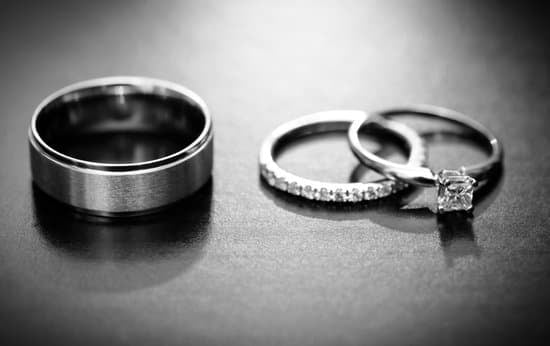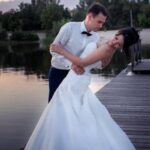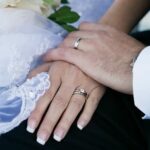Addressing wedding envelopes is an essential part of the wedding invitation process. It sets the tone for the entire wedding event and reflects the level of attention to detail put into the celebration. In this article, we will discuss the importance of properly addressing wedding envelopes and provide tips on how to ensure that your invitations make a lasting impression on your guests.
Properly addressing wedding envelopes is crucial as it gives the first glimpse into what guests can expect from the upcoming nuptials. It not only conveys important information such as guest names and addresses but also sets the overall mood for the wedding. From formal and traditional to creative and modern, the style of addressing envelopes plays a significant role in establishing the theme and tone of the event.
Failure to address wedding envelopes correctly can lead to confusion or misunderstandings, potentially affecting guest attendance. Therefore, taking the time to carefully address each envelope ensures that every guest feels valued and appreciated. By following proper etiquette and guidelines for addressing wedding envelopes, couples can convey their excitement and warmth while inviting loved ones to share in their special day.
The Etiquette of Addressing Wedding Envelopes
Addressing wedding envelopes is a crucial step in the wedding invitation process, as it sets the tone for the entire event. Properly addressed envelopes not only convey important information about the wedding, but also show respect and consideration for the guests. Following etiquette guidelines for addressing wedding envelopes is essential to ensure that your invitations are received with the proper level of formality and respect.
When it comes to traditional etiquette for addressing wedding envelopes, there are some time-honored rules and guidelines to follow. For example, using titles such as Mr. Mrs. Ms. and Dr. is customary when addressing adults.
Additionally, it is important to spell out the full names of streets, cities, states, and countries on the envelope to ensure clarity and formality. However, modern variations and alternatives may also be embraced, allowing couples to personalize their envelopes while still maintaining a level of elegance and respect.
In order to address wedding envelopes properly, it is crucial to gather accurate guest names and addresses. This includes collecting full names (including middle initials if desired) and confirming correct mailing addresses. It’s recommended to double-check all addresses for accuracy before sending out invitations to avoid any potential mishaps or delivery issues. Overall, understanding the etiquette of addressing wedding envelopes is vital in creating a respectful and elegant experience for both hosts and guests alike.
Gathering Necessary Information
When it comes to addressing wedding envelopes, gathering accurate and complete guest information is crucial. Without the correct names and addresses, your invitations may not reach their intended recipients, causing confusion and potential disappointment. Here are some tips for gathering necessary information to ensure that your wedding envelopes are addressed properly:
- Reach out to guests directly: Send out a message or email to each of your guests requesting their full names and mailing addresses. Be sure to specify the format in which you’d like the information provided (e.g. formal names as they should appear on the envelope).
- Use a survey tool: Consider using an online survey tool like Google Forms or SurveyMonkey to collect guest information in an organized manner. This can help streamline the process and make it easier for guests to submit their details.
- Double-check addresses: Once you’ve gathered all of the necessary information, take the time to double-check each address for accuracy. Typos or incorrect ZIP codes can result in undelivered invitations, so it’s important to ensure that everything is correct.
Remember that having accurate guest information isn’t just important for addressing wedding envelopes-it’s also essential for keeping track of RSVPs, creating seating charts, and sending thank-you notes after the big day. Taking the time to gather complete and correct information will save you headaches down the road.
In addition to traditional paper invitations, many couples also opt for digital RSVPs or electronic save-the-dates. If you’re planning on utilizing digital tools for your wedding communications, be sure to gather email addresses along with mailing addresses so that you can keep all of your guests informed through multiple channels.
By being thorough in gathering guest information, you’ll be able to move forward with confidence as you address your wedding envelopes and send out your invitations.
Addressing Outer Envelopes
When it comes to sending out wedding invitations, addressing the outer envelopes is a crucial step in setting the tone for your special event. Properly addressing wedding envelopes not only ensures that your guests receive their invitations, but it also reflects the formality and elegance of the wedding celebration.
Step-by-Step Instructions
Addressing the main outer envelope requires attention to detail and adherence to traditional etiquette. Start by writing the recipient’s name on the front of the envelope, followed by their address. Use titles such as “Mr.” and “Mrs.” when applicable, and be sure to spell out all words (such as street, road, avenue) for a polished and formal appearance.
Options for Addressing Styles
While traditional addressing styles are still widely used, modern couples have the flexibility to opt for creative or informal addressing styles that reflect their unique personalities. From elegant calligraphy to contemporary fonts or even custom-designed labels, there are various options available for addressing outer envelopes that can complement your wedding theme and style.
Formal Versus Creative Addressing
For couples planning a formal and traditional wedding, using classic calligraphy or formal lettering is recommended. On the other hand, those hosting a less formal celebration may choose to use a more casual font or creative embellishments on their envelopes. It’s important to select an addressing style that aligns with both your wedding aesthetic and personal preferences.
By understanding how to address wedding envelopes properly and considering various options for creativity within tradition, couples can ensure that their invitations make a lasting impression on their guests from the moment they receive them in the mail.
Addressing Inner Envelopes
When it comes to addressing wedding envelopes, the inner envelope holds a special significance in setting the tone for the wedding event. The inner envelope is an opportunity to express warmth and familiarity towards the invited guests, as well as to clarify who is specifically invited to the wedding festivities. This section will cover the purpose of inner envelopes and provide guidance on how to properly address them for various wedding events.
The inner envelope serves as a protective covering for the invitation itself and also acts as a way to convey a personal touch to each guest. When addressing the inner envelope, it is essential to use proper titles and full names for each individual or family invited. For example, if inviting a couple, you would use “Mr. John Smith and Mrs. Jane Smith” rather than just their last name.
For families with children, it is customary to list the children by age from oldest to youngest on the inner envelope under their parents’ names. This helps communicate who exactly is invited and ensures that there are no misunderstandings about whether children are included in the invitation.
Different techniques can be utilized when addressing inner envelopes for various wedding events such as rehearsal dinners, bridal showers, or post-wedding brunches. The level of formality for these events may vary, so it is important to adjust the addressing style accordingly while ensuring that all guests feel welcomed and appreciated.
Overall, addressing wedding envelopes is a significant aspect of wedding planning that requires attention to detail and consideration for each guest. It sets the tone for what can be expected at the actual wedding event and conveys thoughtfulness towards those who will be sharing in this special occasion. By taking the time to address inner envelopes with care, couples can create a memorable experience from start to finish for their guests.
Dealing With Complicated Situations
When it comes to addressing wedding envelopes, there are often complicated situations that arise, such as how to address envelopes for unmarried couples, families with children, and same-sex couples. It’s important to navigate these situations with care and consideration for all individuals involved. Here are some strategies for handling these complicated address scenarios:
- Unmarried Couples: When addressing envelopes for unmarried couples who live together, it’s appropriate to list both individuals’ names on the same line without using the word “and.” For example, “Ms. Jane Smith Mr. John Doe.”
- Families with Children: When addressing envelopes to families with children, the outer envelope should include the parents’ names only, while the inner envelope can include the children’s names. For example, “Mr. and Mrs. James Johnson” on the outer envelope and “James and Emily” on the inner envelope.
- Same-Sex Couples: It’s essential to address same-sex couples with the same respect and consideration as heterosexual couples. Use the same formatting rules as you would for any couple, regardless of gender.
In addition to these specific scenarios, it’s also important to have a plan in place for handling address changes and last-minute additions. Make sure to double-check all addresses before finalizing your invitations to avoid any unnecessary complications.
Ultimately, navigating these complicated situations requires sensitivity and attention to detail in order to ensure that all guests feel respected and included in your special day. By handling these scenarios thoughtfully and respectfully, you can set a positive tone for your wedding celebration.
Remember that addressing wedding envelopes is not just about sending out invitations – it’s an opportunity to show your guests how much they mean to you by taking their individual circumstances into account when addressing their invitations.
Calligraphy and Handwriting Tips
When it comes to addressing wedding envelopes, the presentation is key. Calligraphy is a popular and elegant option for addressing wedding invitations, adding a touch of sophistication and personalization to each envelope. Whether hiring a professional calligrapher or practicing calligraphy skills at home, there are several tips to consider for achieving beautiful and well-executed envelope addressing.
Advantages of Using Calligraphy
One of the main advantages of using calligraphy for addressing wedding envelopes is the aesthetic appeal. Calligraphy adds a timeless and luxurious touch to invitations, setting the tone for the formality and elegance of the wedding event. Additionally, using calligraphy demonstrates thoughtfulness and attention to detail, making guests feel special from the moment they receive their invitation.
Alternatives to Calligraphy
While calligraphy is a popular choice for addressing wedding envelopes, there are also alternatives for brides on a budget or with limited time. For brides who want a similar elegant look without the cost of professional calligraphy services, there are various handwriting techniques that can be used to achieve beautiful envelope addressing. It’s essential to practice proper spacing, sizing, and overall neatness when handwriting addresses to maintain a polished appearance.
Tips for Calligraphy and Handwriting
Regardless of whether choosing calligraphy or handwriting for addressing wedding envelopes, there are some general tips to keep in mind. First and foremost, use high-quality pens or markers that won’t smudge or bleed on the envelopes. Practice writing names and addresses on scrap paper before starting on the actual envelopes to ensure consistency in style and spacing.
Additionally, consider using a light pencil outline as a guide when writing addresses by hand to ensure even lines and proper alignment. Taking these extra steps will result in beautifully addressed invitations that reflect the care put into every aspect of the wedding planning process.
With careful consideration and attention to detail in how you address your wedding envelopes with either calligraphy or handwriting, you can set an elegant tone that will leave a lasting impression on your guests.
Mailing and Delivery Considerations
Sending out the wedding invitations is an exciting and important step in the wedding planning process. However, before dropping them in the mailbox, it is crucial to consider mailing and delivery considerations to ensure that all guests receive their invitation in a timely manner. This section will provide best practices for organizing and mailing wedding invitations, as well as tips for ensuring proper delivery and tracking.
When preparing to mail out wedding invitations, it is essential to have all the necessary supplies on hand. This includes quality envelopes that are sturdy enough to protect the contents, sufficient postage for each invitation, and any additional inserts such as RSVP cards or information cards.
It is also a good idea to have extra envelopes on hand in case of mistakes during addressing. Double-checking that each envelope is properly addressed with accurate guest names and addresses is crucial for successful delivery.
Once all the invitations are ready to be mailed, brides and grooms should consider sending them out 6-8 weeks before the wedding date. For destination weddings or events taking place during busy travel times, it may be beneficial to send them out even earlier. Additionally, brides can consider using special stamps or custom postage to add a personalized touch to their invitations.
To ensure proper delivery of wedding invitations to guests, it is recommended to use tracked or registered mail services when sending out the invitations. This allows couples to monitor the progress of their deliveries and provides peace of mind that their guests will receive their invitations without any issues. By following these mailing and delivery considerations, brides can rest assured that their carefully addressed envelopes will reach their intended recipients in a timely manner.
Conclusion
In conclusion, addressing wedding envelopes is not just a mundane task, but a critical part of the wedding invitation process. It sets the tone for the entire wedding event and shows guests that their presence is valued and appreciated.
Properly addressed envelopes also adhere to longstanding etiquette rules, adding an element of formality and elegance to the invitation. By taking the time to address envelopes with care and attention to detail, couples can ensure that their guests feel honored and excited to attend their special day.
Furthermore, addressing wedding envelopes involves more than just writing names and addresses. It requires gathering accurate guest information and understanding the traditional rules of addressing envelopes. Additionally, it involves dealing with complicated situations such as how to address envelopes for unmarried couples, families with children, and same-sex couples. By following proper etiquette and addressing each envelope thoughtfully, couples can create a memorable first impression of their wedding for their guests.
In the end, whether opting for calligraphy or handwritten addressing styles, the key is to convey warmth and sincerity through the invitations. Even with modern variations available today, traditional guidelines for addressing wedding envelopes should be respected in order to maintain elegance and formality throughout the entire invitation process. By doing so, couples will be able to convey the importance of their special day while ensuring that each guest feels truly honored by receiving a beautifully addressed wedding invitation.
Frequently Asked Questions
How Do You Address an Envelope to a Wedding?
Addressing an envelope to a wedding typically involves writing the recipients’ names on the front, followed by their mailing address. If the couple shares a last name, it is customary to write “Mr. and Mrs. [Husband’s Full Name].” If they have different last names, both full names are written.
Do You Write Mr and Mrs on a Wedding Card?
When writing a wedding card, it is appropriate to address it with “Mr. and Mrs.” if the couple is married and shares the same last name. However, if they have different last names or if you’re unsure of their preference, using both first names (e.g., “John and Sarah”) would be appropriate.
Does the Man or Woman’s Name Go First on Wedding Envelope?
Traditionally, the man’s name goes first on the wedding envelope when addressing a married couple: for example, “Mr. and Mrs. John Smith.” However, in more modern contexts or if the couple has different preferences, you can opt to alphabetize the names or use whichever order feels most respectful for them.

I have been involved in marriages for over 20 years helping couples and singles understand more about them.





